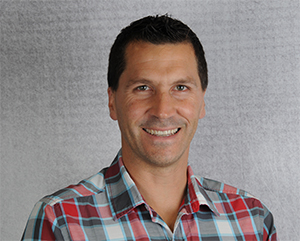CTS-D Exam Revalidation: Reflection of a Dynamic Industry

Volunteer subject matter expert Rodrigo Ordóñez, CTS®-D, sheds some light on proposed changes to the CTS-D exam.
Every five years, as part of its accreditation, the CTS exam goes through a revalidation process. To kick-start the process, several volunteer subject matter experts look at what has been, what is, and what should be, and make suggestions accordingly.
Rodrigo Ordóñez, principal and designer at K2 Audio in Boulder, Colorado, is part of the group who advised on the CTS-D revalidation. Ordóñez has been involved with AVIXA on a number of levels during the past seven years, including presenting seminars and training sessions at InfoComm shows, serving on the CTS Steering Committee, and the CTS-D Item Writing, CTS Renewal, and Appeals subcommittees, as well as the CTS Scheme Review subcommittee, which has recently been active in re-evaluating the CTS structure and recommending changes to the exam.
Ordóñez sees the re-evaluation process as two-pronged. “The first part is making sure that the certification is compliant with ANSI/ISO requirements; and this is required every five years. The second part is to keep up with changes in this dynamic industry,” he explains. “It gives us the opportunity to review validity of parts of the test, to enter new topics that might have increased in importance, and phase out any parts that related to technologies that might no longer be applicable to what we are doing day-to-day.”
Suggested changes were subtle, he says, and reflected both the requirements for different levels of certification and shifts in balance of content required versus knowledge base and shifts in balance of design technology knowledge and process knowledge.
“I was expecting more radical changes, but the feedback on all three certifications indicated to the contrary. We took a very good look at the requirements for the different levels of certification and the profile and prerequisites of people wanting to take the test. There were a lot of suggestions on what should and shouldn’t be included in that regard, and some changes were made to the CTS and CTS-I, but with the CTS-D, we decided that the current requirements were applicable and efficient, and didn’t need to be addressed. Nevertheless, it was useful to have the chance to check that those requirements were still valid.
“On the exam topics, there was shift in the balance of what content is required as far as the certification testing and the knowledge base,” he continues. “Although we found the profile of the person taking the certification to be the same, there was a leaning toward design and design technology knowledge versus process knowledge. So, the new test will reflect that, with a shift toward practical design knowledge versus business practices.”
The committee had several in-depth discussions about changes in the industry since the last time the test was examined, and this informed their decision-making. Ordóñez says they identified a big shift in the profile of people coming into the industry, particularly toward people coming to AV right out of high school or technical college.
“Part of that is outreach from the industry, and also continued development of young people toward technical and software-based applications or jobs specifically. It provided us an opportunity to make sure we allow people in that talent group to be identified in our industry.” He also notes that changes in digital technology and networking has altered the skill set of people in the industry toward more software-based technologies. “People have a far better understanding of IT and digital software applications versus traditional hardware or analog applications. It’s subtle, but relevant enough to warrant changes in the test to make sure it is current. It wasn’t so much the topics, but what fits into those topics.”
Interested in the details? Learn more about the exam revalidation process and exam content changes for each exam.
Subscribe to the CTS Newsletter to stay in the loop.




